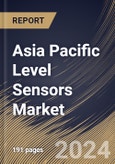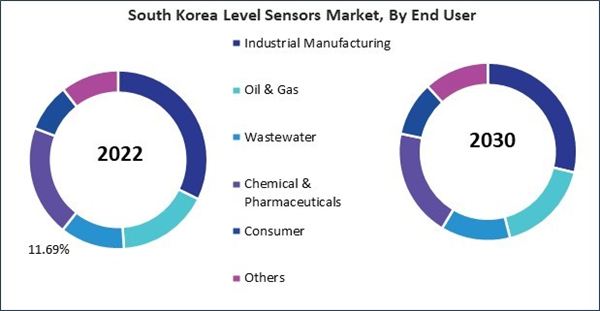In the level sensors market, the oil and gas sector stand as a significant end user, relying heavily on precise and reliable level measurement solutions to monitor various fluids and substances across exploration, production, refining, and distribution processes. Therefore, the China market used 857.75 thousand units of level sensors in oil & gas segment in 2022.
The China market dominated the Asia Pacific Level Sensors Market by Country in 2022, and would continue to be a dominant market till 2030; thereby, achieving a market value of $1,014.8 million by 2030. The Japan market is registering a CAGR of 8.4% during (2023 - 2030). Additionally, The India market would showcase a CAGR of 9.8% during (2023 - 2030).
It is anticipated that the increasing need for intelligent instruments featuring microprocessors that deliver performance data will constitute a substantial catalyst for the level sensors market. These intelligent instruments offer higher accuracy and efficiency compared to traditional sensors, making them ideal for applications where precise measurement is crucial. The ease of installation and maintenance enhances their attractiveness, propelling market expansion.
Moreover, the expanding adoption of intelligent multiphase sensors, specifically in the food, water, and oil and gas sectors, is anticipated to propel market expansion. Intelligent multiphase sensors have the capability to concurrently measure numerous parameters, thereby offering significant insights into the composition and performance of food, gas, and oil products. This versatility makes them highly desirable in industries where accurate and real-time data is essential for decision-making and process optimization. Consequently, as these industries expand, the demand for smart multiphase sensors will also increase.
The rising manufacturing sector in China is providing a growth environment for the level sensors market. According to the Belt and Road Portal, from 2012 to 2021, the added value of China’s manufacturing sector increased from 16.98 trillion yuan to 31.4 trillion yuan. A leap from 1.059 million to 2.138 million occurred for the first time in 2021. Thus, the rising manufacturing sector in China, the growth of the oil and gas industry in the Asia-Pacific region, and the expanding chemical sector in India are all expected to drive the demand for level sensors in their respective industries.
Based on Technology, the market is segmented into Contact (Guided Wave, Magnetostrictive, Hydrostatic, Magnetic & Mechanical Float, Pneumatic, and Others) and Non-Contact (Ultrasonic, Microwave/Radar and Others). Based on Monitoring Type, the market is segmented into Continuous Level Monitoring and Point Level Monitoring. Based on End User, the market is segmented into Industrial Manufacturing, Oil & Gas, Wastewater, Chemical & Pharmaceuticals, Consumer, and Others. Based on countries, the market is segmented into China, Japan, India, South Korea, Australia, Malaysia, and Rest of Asia Pacific.
List of Key Companies Profiled
- TE Connectivity Ltd.
- Siemens AG
- Sensirion AG
- Emerson Electric Co.
- ABB Ltd.
- Ametek, Inc.
- Honeywell International, Inc.
- Fortive Corporation (Fluke Corporation)
- Texas Instruments, Inc.
- Amphenol Corporation
Market Report Segmentation
By Technology (Volume, Thousand Units, USD Billion, 2019-2030)- Contact
- Guided Wave
- Magnetostrictive
- Hydrostatic
- Magnetic & Mechanical Float
- Pneumatic
- Others
- Non-Contact
- Ultrasonic
- Microwave/Radar
- Others
- Continuous Level Monitoring
- Point Level Monitoring
- Industrial Manufacturing
- Oil & Gas
- Wastewater
- Chemical & Pharmaceuticals
- Consumer
- Others
- China
- Japan
- India
- South Korea
- Singapore
- Malaysia
- Rest of Asia Pacific
Table of Contents
Companies Mentioned
- TE Connectivity Ltd.
- Siemens AG
- Sensirion AG
- Emerson Electric Co.
- ABB Ltd.
- Ametek, Inc.
- Honeywell International, Inc.
- Fortive Corporation (Fluke Corporation)
- Texas Instruments, Inc.
- Amphenol Corporation
Methodology

LOADING...









